We give Nic the tick
Camping in a huge truck stop squeezed between monster transport trucks with a pet pig and toilets featuring an old plastic curtain across the front was not the best start to our Nicaraguan experience. Like most Central American countries, Nicaragua has had some serious problems in the past and many played out in bold font through the international press. But these days Nic, as its sometimes referred to, has a more positive and safer reputation. From our truck stop as a starting point we were going to spend a few days exploring its highlights as we continue our drive south.
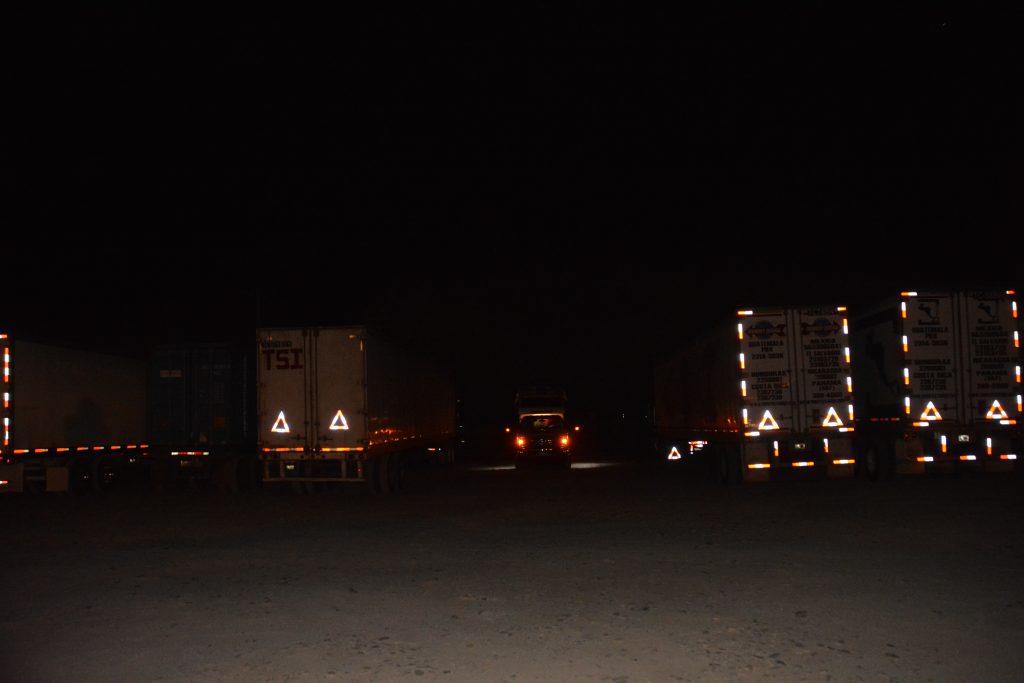
Amongst the giants – Tramp hides between a couple of huge transport trucks on our first night in Nicaragua
Nicaragua has a history that is similar to other Central American countries, Spanish colonial playground to exploit at will, independence, unstable government, heavy military intervention, civil unrest leading to civil war, revolutionary leftist leaders, now quasi-legit democratic leaders. Nicaragua has the added twist of its problems having a much higher profile with the Iran-Contra fiasco in the 1980’s, the Sandinistas making international news and the on-again-off-again leader named Daniel Ortega, who is still President today. Notwithstanding all that, Nicaragua does get above average marks for safety.
As we drove southeast towards Nicaragua’s second city, Leon, two things became quickly apparent. First, the roads were pretty good, better than we expected (we always end up judging the roads), and we made good time with only the trucks and almost no privately owned cars to deal with. Second, the people we saw lived in very simple rough old homes, sometimes nothing more than random pieces of wood and aluminium sheets nailed together. Even homes that were slightly better definitely were a step down from what we had recently seen.
Other than the big transport trucks the next most common transport on the roads or on the dusty side tracks were horse or bullock-drawn carts, just as we had seen in Cuba. Sometimes pulled by a horse, other times by two cattle, usually wooden flat beds carrying goods, firewood, bags of grain, whatever it may be. Nicaragua is the second poorest country in the Western Hemisphere, after only poor old Haiti, and this sad fact was immediately obvious. Seeing all these horse or cow drawn carts on a beautiful new highway was a serious disconnect.
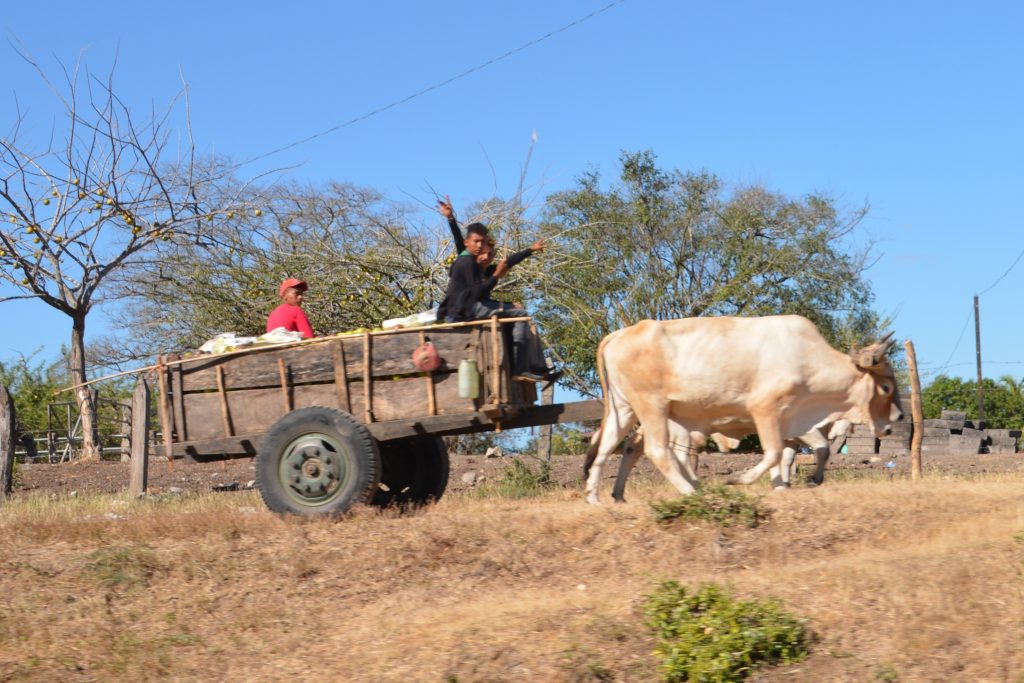
Wow, wait a second, is this Cuba all over again? Nicaragua is the second poorest country in the western hemisphere and it shows with the use of bullocks and horses pulling carts
The road took a wide arch around Nicaragua’s highest mountain, the grand San Cristobal volcano. The volcano stood high above the flat plains, one side devoid of life after an eruption, the volcano still active and still letting off a little steam against the hot early morning blue sky. We found a little dirt track and followed it through the jungle, past dirt-poor homes to a cleared rise where we had postcard views of the volcano.
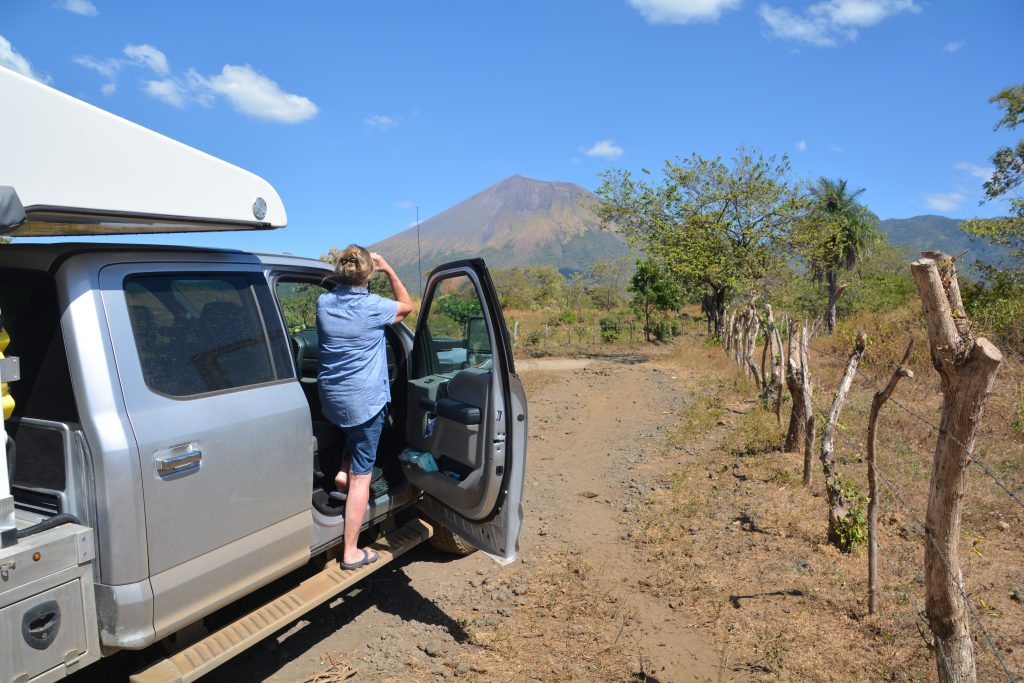
We followed this rough dirt road up the slope towards the handsome San Cristobal volcano, Nicaragua’s tallest mountain
Eventually we made it to Leon, Nicaragua’s second city, and headed into the busy city centre where the largest cathedral in all of Central America takes centre stage. Built in the 18th century by the Spanish, this huge structure was plain but elegant and the large buzzing plaza in front of it added to the appeal. But the heat was suffocating, over 100 degrees F, or about 39C, and we opted for lunch in a restaurant facing the cathedral and plaza. Very cool.
From Leon we followed a rough dirt track past salt reclamation beds down to the beachside village of Salinas Grandes and camped the night at a ‘surf camp’ which has small cabanas for international surfers, pool, bar and glorious black sandy beach. We enjoyed a lazy afternoon, trying to stay out of the heat, just taking in this beautiful scene. It was a step up from the truck stop we left in the morning.
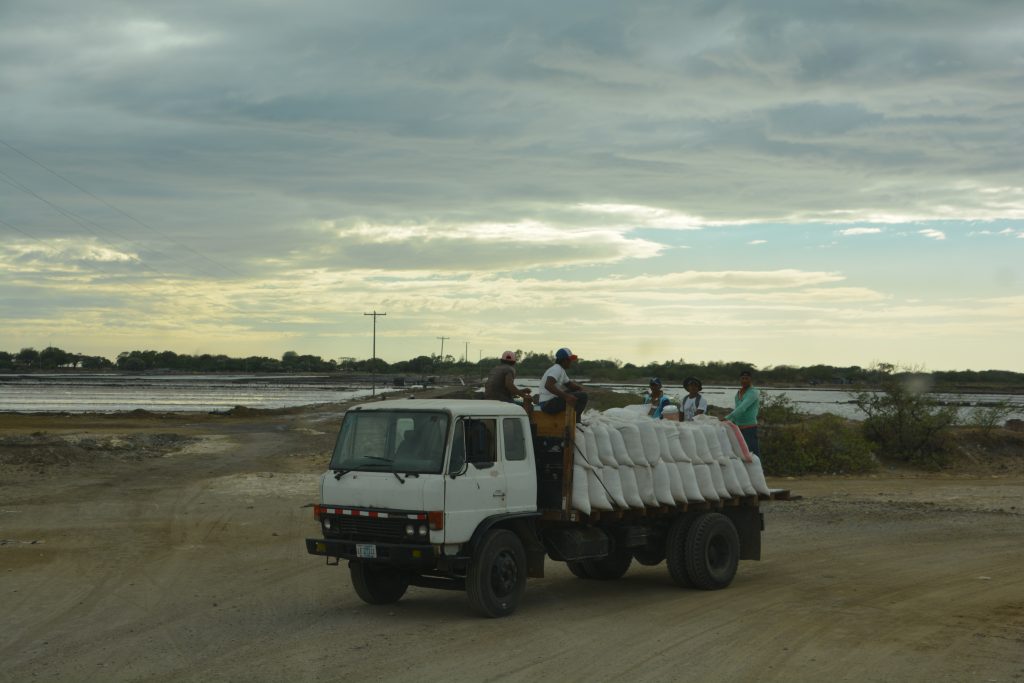
The salt flats near Salinas Grande were harvested by hand with the salt loaded into these huge bags by shovel and driven off
We lingered the next morning, doing washing, diving into their wifi and pool, then headed back to the highway and up towards the capital Managua. We diverted off the main road and visited the town of Masaya perched high on the mountain rim of a lake and checked out its cathedral, colourful plaza and artisan market. Then it was on to the pearl of Nicaragua’s tourist map, the old city of Granada.
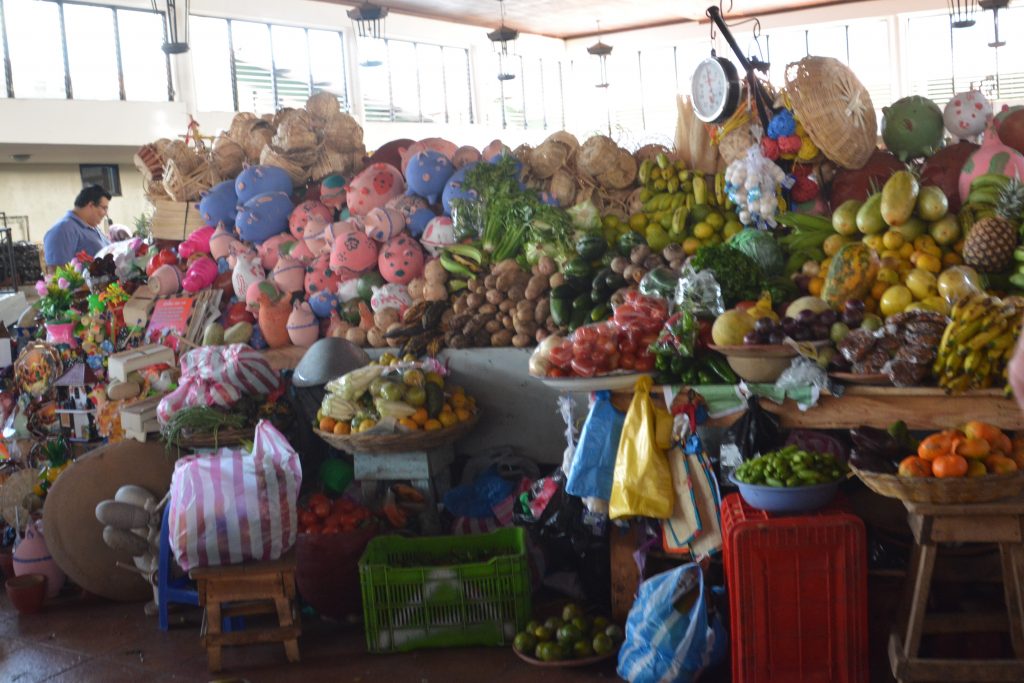
The markets of Masaya were interesting – can you see the large colourful piggy banks mixed in with all the vegetables?
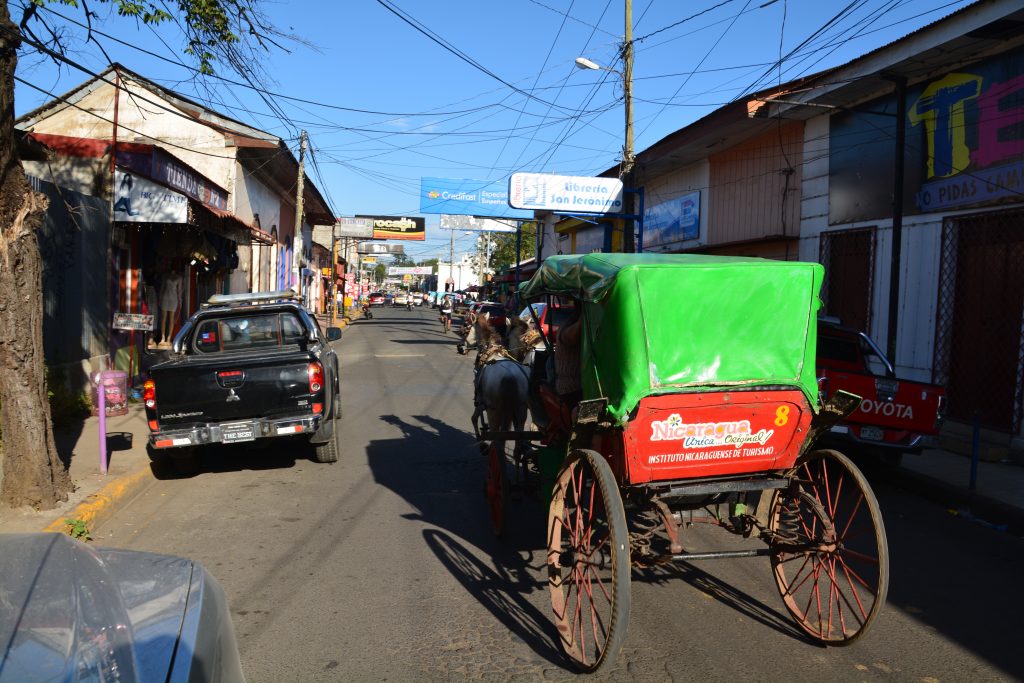
The traffic in Masaya, like most towns, is totally clogged up by horse-drawn carriages. Check out the hard rubber tires on this one.
The Spanish used Granada as a proof-of-purpose city, building an elegant cathedral, administration buildings, palaces and transport network as their first capital. At one stage Granada and Leon engaged in a civil war over the rights to be the capital of the country – it was decided that as a compromise the town of Managua would win the prize (sounds a little like Australia without the war part). But Granada has retained all of the old colonial charm and is clearly the go-to place for visitors from Nicaragua, other parts of the region or from further afield. Granada was extremely likeable.
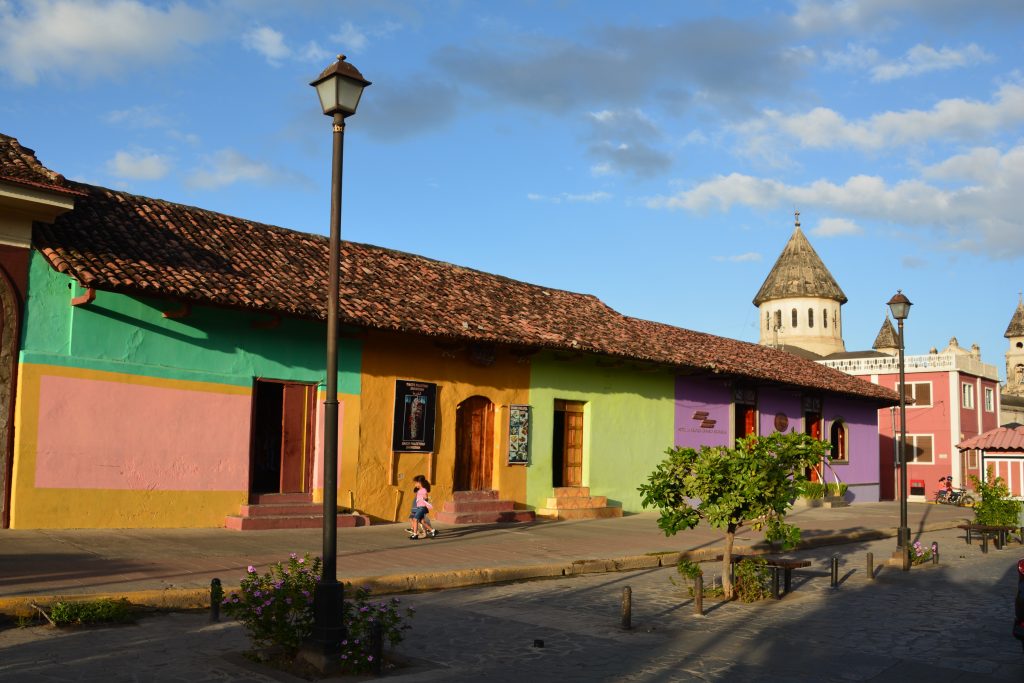
Granada was one of the most beautiful towns we have visited on this trip – the history, architecture, colours and people made this place very special
Julie and I wandered the town, took in the cathedral and plaza, finished the evening with drinks and dinner in one of the attractive walking streets’ outdoor cafes. With a little breeze blowing down the streets the heat was almost bearable. We camped that night in the carpark of the local Red Cross, a safe compound with minimal facilities and unfortunately not a breath of wind.
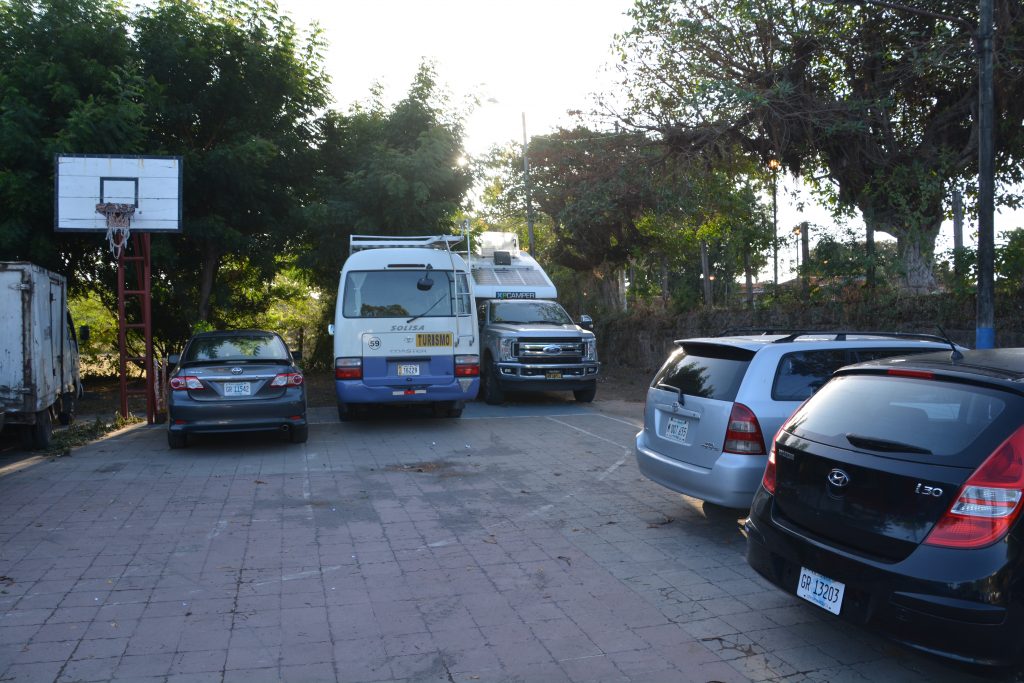
Tramp was wedged between a local bus and a few other cars at the Red Cross parking lot but it was safe and within walking distance to the historical area
It was a Sunday morning and behind our Red Cross campground was a baseball complex featuring four different games at once. We checked out the action and really enjoyed the scene of little kids all the way up to grown (slightly over-grown) men playing baseball. The uniforms didn’t match and the outfield was a bit brown and uneven but there was the unmistakable sound of baseball being played, coaches yelling, the crack of the bat and the cheer of the crowd. We loved it.
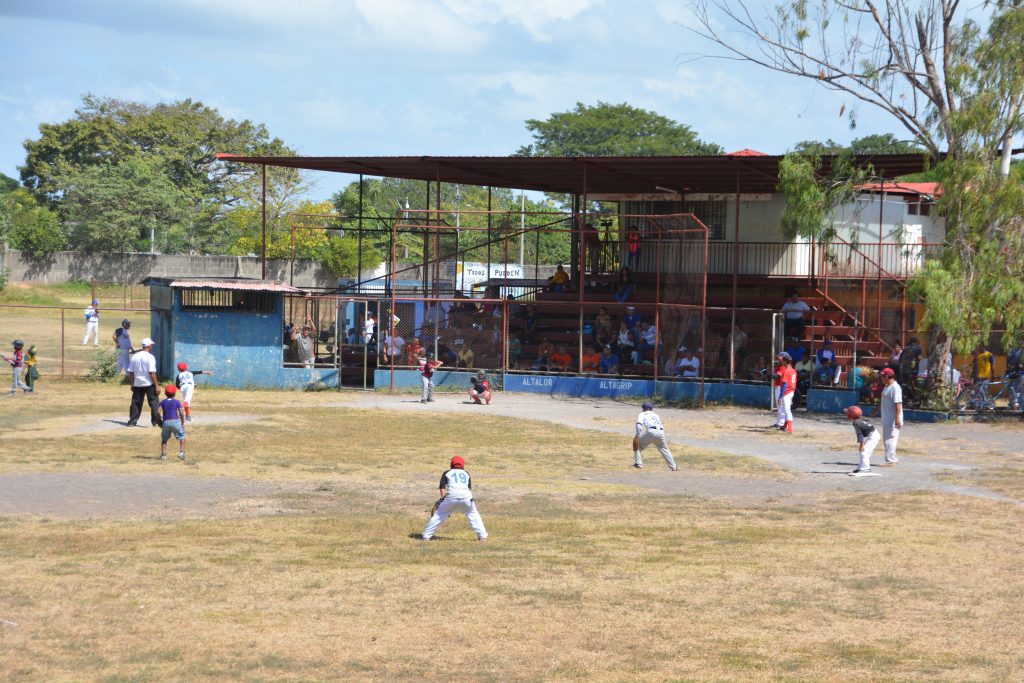
Baseball Nicaragua style, there was a wide range of ages on the field and the uniforms didn’t match but there was a good crowd of spectators and everyone was having fun.
But this area had much more to offer so in one of our normal spur of the moment decisions we decided to spend our last night in Nicaragua up amongst the volcanos rather than down on the southern beaches. The dirty black beaches weren’t grabbing us but the cool tall volcanoes were. We reckon this decision was a ripper.
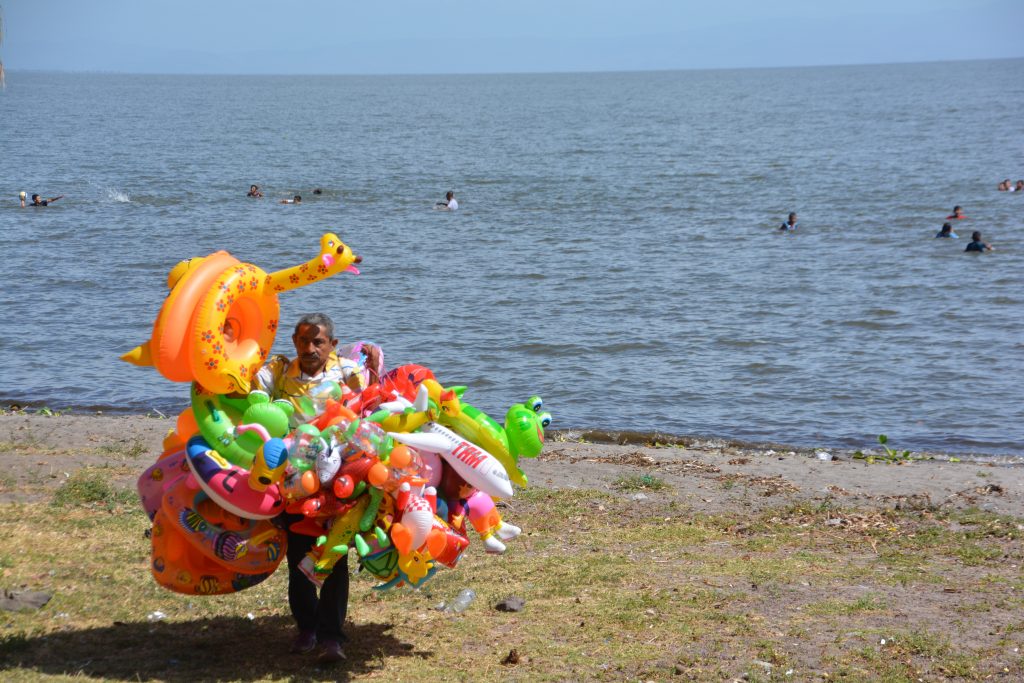
Okay, the beach on Lake Nicaragua at Granada wasn’t great but the kids had some fabulous blow up toys to choose from
Granada is on the shores of picturesque Lake Nicaragua and is surrounded by volcanoes of all sizes. The most famous is Mombacho Volcano, overlooking the city and due to an eruption many centuries ago responsible for the formation of over 300 little islands just off the coast. Now a national park which only allows access on weekends – and at exorbitant rates at that – the volcano reveals its secrets after a steep drive up to the rim and a choice of vigorous walks through the jungle and the heat for views of the valley and lakes below.
Julie and I drove up to the first parking lot and ticket window and chose the slightly cheaper option of driving our own 4WD vehicle up the steep hill. Tramp had to be inspected to ensure he was up to the task – and the young guy said I would have to put him in 4L and turn off the air conditioner to ensure I would get up the hill. I assured him the V8 with a 6.2 litre engine would make the journey, whatever it may be.

Okay, the hill was steep but it was paved all the way and Tramp could have done it in two wheel drive
Anyway…after we were granted approval we pulled onto the road to wait for the final thumbs up – they had to coordinate traffic because it is only wide enough for vehicles in one direction. And then the bad news, the boss up the hill said he would not allow Tramp to proceed, apparently he was worried about clearance and the tight steep switchbacks. Really? This is outrageous!
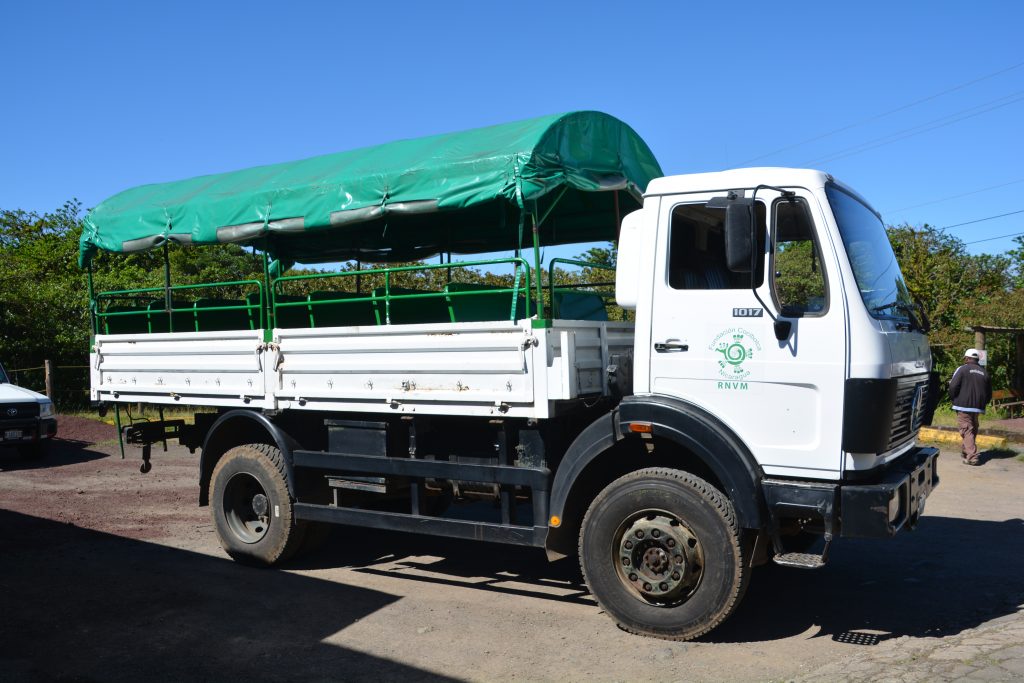
This big clunky thing took us to the top of the volcano, a sad excuse for a ride compared to the strength and luxury of Tramp!
Meanwhile we saw little skimpy Prados and old Hiluxes get the green light and head up. This was an unprecedented slight on Tramp, a monster of a truck compared to those little toys, and I had to repark him in the shade and let him sulk while we climbed aboard the public ‘eco-bus’ for the trip to the top.
The drive to the top was steep, that’s for sure, and some of the switchbacks were a bit tight but except for one short flat section the entire road was paved and Tramp could have easily made the whole trip up in 2WD. These Nicaraguan boys don’t know about Australian four wheel driving and big Yankee 4WD trucks.
After paying an additional $2 each (after $20 each to enter the park), we enjoyed a fabulous walk around one of the rims of this multi-faceted volcano, great views down on Granada and the lake below and other volcanoes all around. We saw howler monkeys and numerous colourful birds plus – a big bonus – a handsome sloth just hanging out in the tree, trying to ignore the walkers and extend his afternoon snooze.
That afternoon we drove over to another volcano and national park, Laguna de Apoyo, a large lake filling an ancient volcanic caldera, and camped in the carpark of a lovely upmarket hostel on the shores of the lake. We had a drink with views of the lake rimmed with mountains and toasted a fabulous day amongst the mountains. Tramp is a tough dude and he’s already over the hurt.
The next morning we had a refreshing swim in the lake, dubbed by one book as ‘the best swim in Nicaragua’ and slowly made our way south along the shores of Lake Nicaragua and through a forest of huge wind turbines until we hit the Costa Rica Border. Two hours later, after many queues, forms, stamps and nonsense we were in a new country.
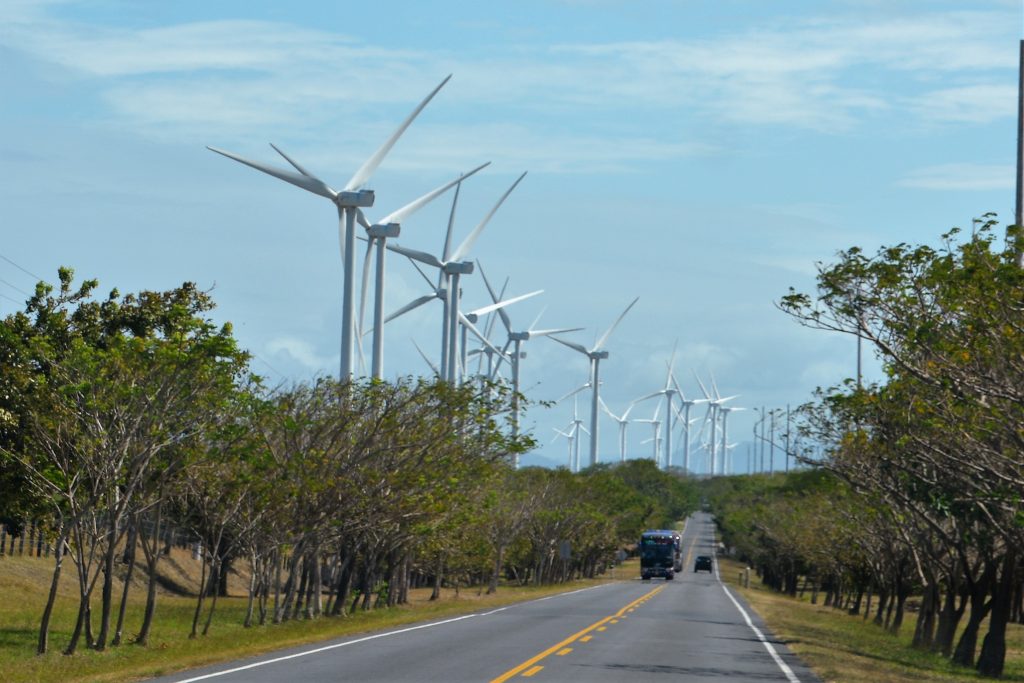
A final burst of modern technology before we left Nicaragua – hundreds of wind turbines catching the strong winds off the lake
Nicaragua had proved to be a very pleasant surprise. The place felt very safe and we didn’t have a single police check the whole four days there. The beaches were good but we particularly liked the volcanoes. And the historic town of Granada might be our favourite town on the whole trip – it was that good! The roads were very good, the drivers respected the driving rules and the country was relatively cheap. Nicaragua still has a mountain of issues to deal with, in particular the abject poverty that is visible on every roadside, but we definitely give Nic the tick of approval.
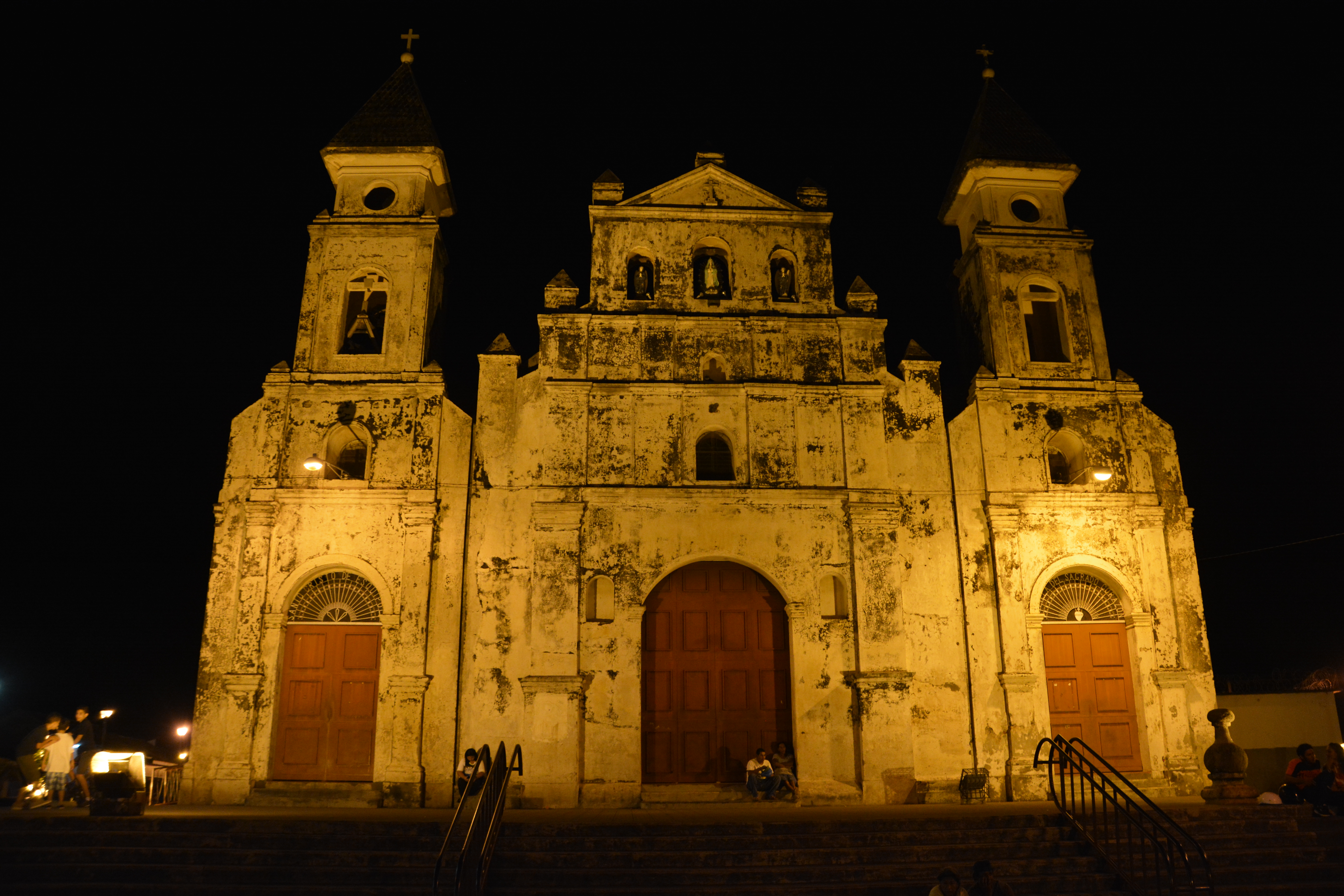






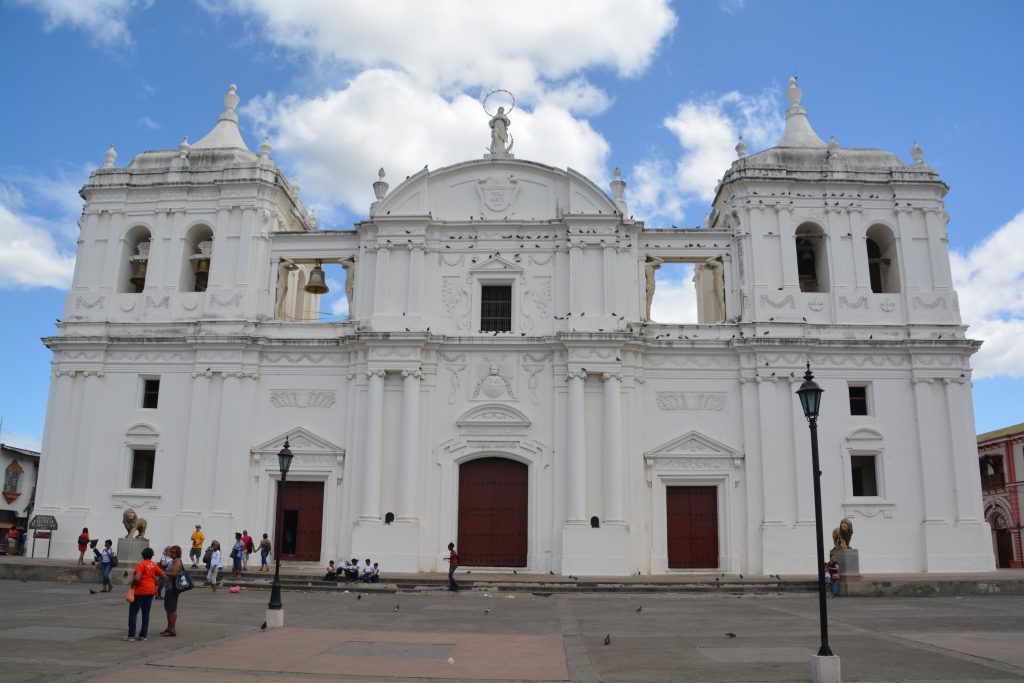














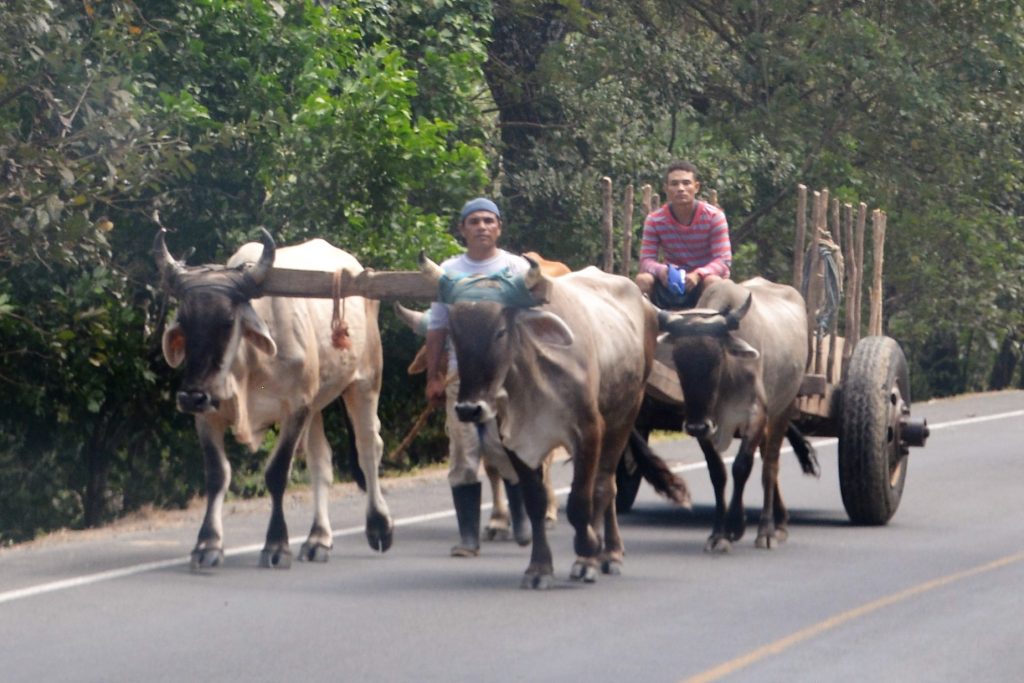
Comments
We give Nic the tick — No Comments
HTML tags allowed in your comment: <a href="" title=""> <abbr title=""> <acronym title=""> <b> <blockquote cite=""> <cite> <code> <del datetime=""> <em> <i> <q cite=""> <s> <strike> <strong>